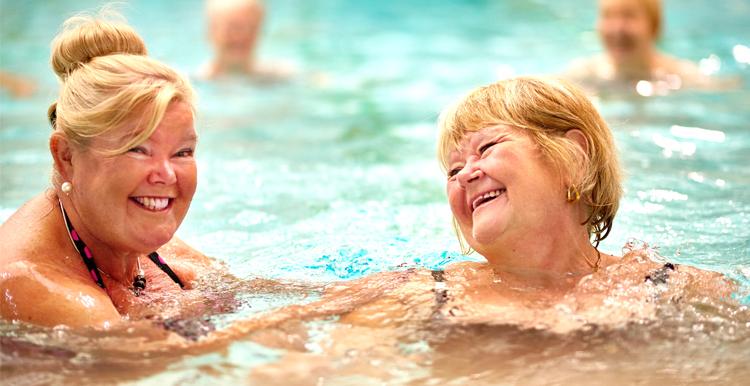Get active your way
There are many ways that you can build physical activity into your life. Being physically active is easier than you think, especially if you make activity part of your daily routine.

Fitness for older adults
- Be active around the house – cooking, housework and walking while you're on the phone can help keep you mobile, although these activities won't count towards your weekly activity target.
- Get into shape with Strength and Flex, a 5-week exercise plan to increase strength and flexibility for beginners.
- Conservation groups are a way to get involved in improving your local environment and being active at the same time. Find out more about Green Gyms.
- Try something new. If you're not sure what activities you'd like, find out which sport or activity you're best suited to using the BBC's 'Which sport are you made for?' tool.
- Walking is the easiest way to increase your activity levels. Find a friend to walk with, or join a walking group for some extra motivation. Read about walking for health.
- Sports or fitness classes keep you motivated and can be fun, relieve stress and help you meet friends.
- Heavy gardening – including pushing, bending, squatting, carrying, digging and shovelling – can provide a good workout.
- Swimming, aqua aerobics and working out in water are ideal for older adults, because water reduces stress and strain on the body's joints. Find out more in swimming for fitness.
- Yoga is suitable for all ability levels. It combines a series of poses with breathing, and is good for building strength, flexibility and balance.
- Tai chi is an ancient Chinese art that builds strength, flexibility and balance through slow and controlled movements.
- Pilates focuses on stretching and strengthening the whole body to improve balance, muscle strength, flexibility and posture.
- Take up running – if you're just starting out, try our popular Couch to 5K running plan.
Disabled people
When it comes to exercise, disabled people have pretty much the same options – everything from simply getting out a bit more to playing team sports.
- If you can walk, there's no easier way to increase your activity levels. Try to include walking in your daily routine. Find a friend to walk with or join a walking group for some extra motivation.
- Cycling – there are tricycles, quadcycles, recumbants, hand-powered bikes called handcycles, and power-assisted bicycles, all of which are alternatives for those unable to ride a regular bicycle. Find out more at British Cycling, the Handcycling Association, Companion Cycling and Race Running.
- Take up running – if you're just starting out, try the NHS Couch to 5K running plan.
- Get moving with Strength and Flex, a 5-week exercise plan to increase your strength and flexibility (not suitable for wheelchair users).
- Split activity up throughout the day. You can achieve your target in bouts of 10 minutes or more – try these 10-minute workouts. Talk to a health professional or ask an organisation for people with your disability about what the best exercises are for you.
- Low-impact exercises such as yoga, pilates and tai chi have been adapted to suit the needs of people with different types of disabilities. Get advice first, however, particularly if you have a physical disability – exercises not suited to your disability may be harmful.
- Choose a gym from more than 400 Inclusive Fitness Initiative (IFI) accredited gyms. Find an opportunity near to you on Activity Alliance’s website.
- Swimming can feel quite liberating if you have a physical disability, as your body is mostly supported by the water. Many pools offer classes and sessions that cater specifically for disabled people. Find out more at swimming.org.
- Adapted sports – many sports can be played by disabled people on the same basis as non-disabled people. Some, such as blind football, have also been adapted to make them more disability-friendly.